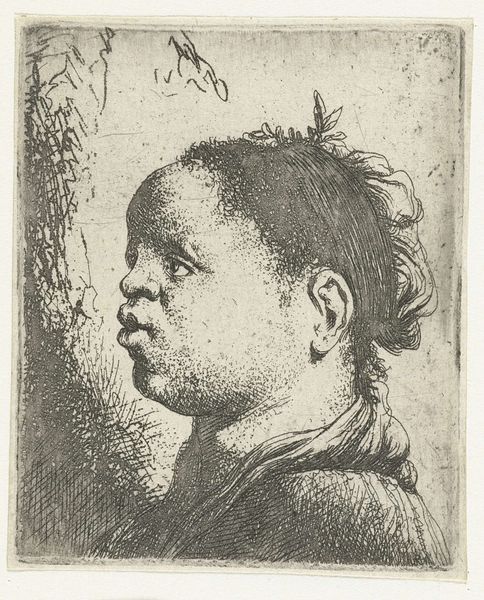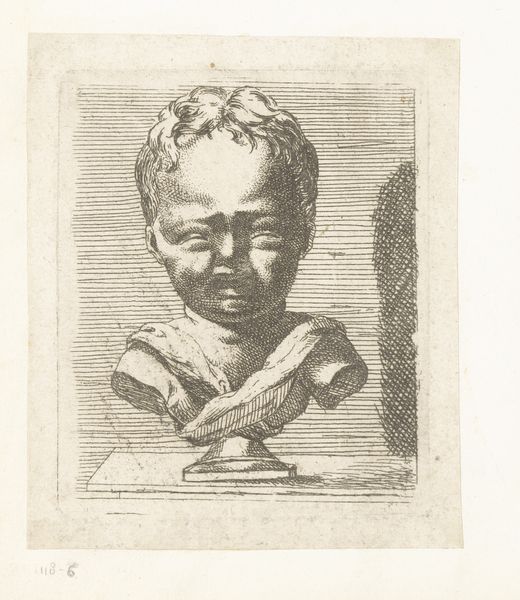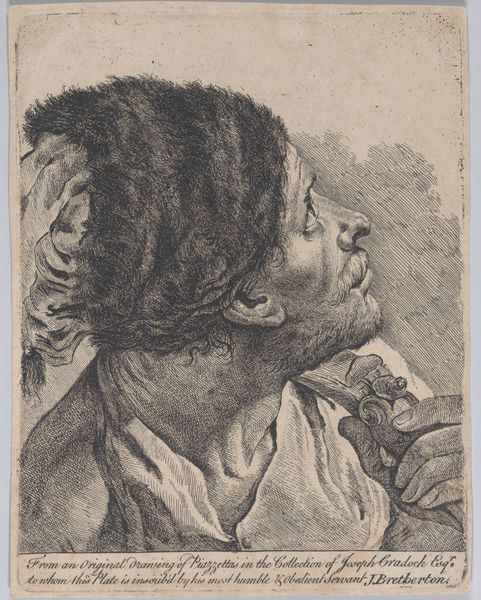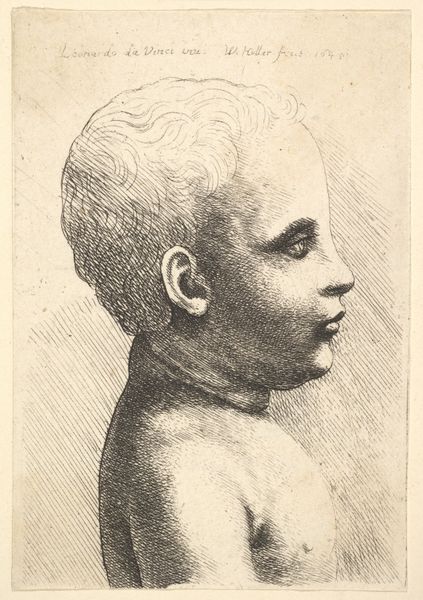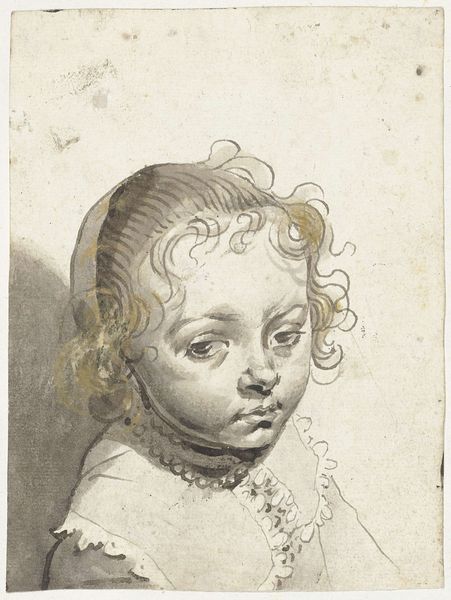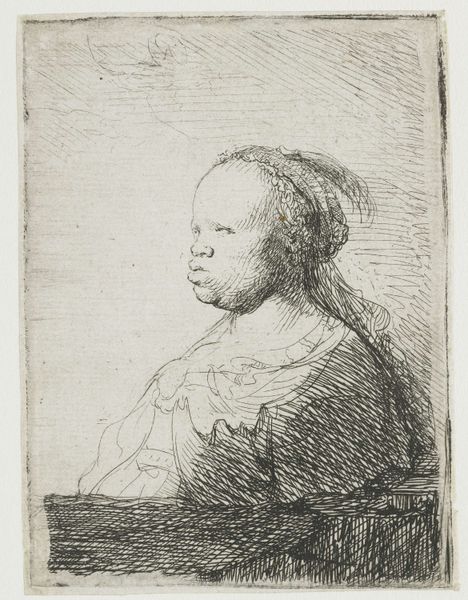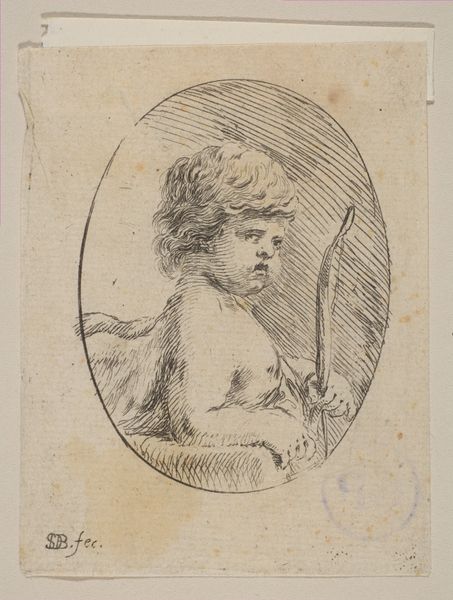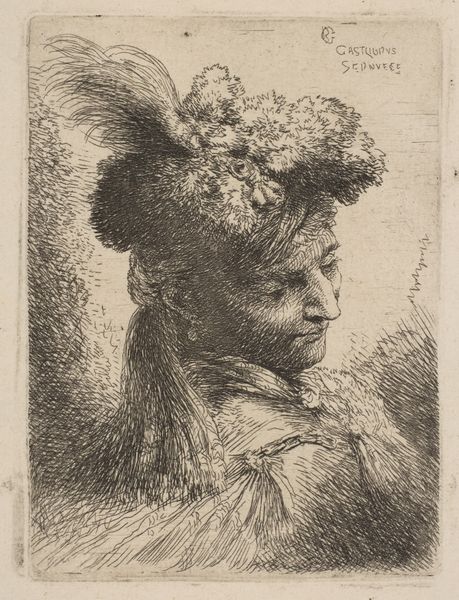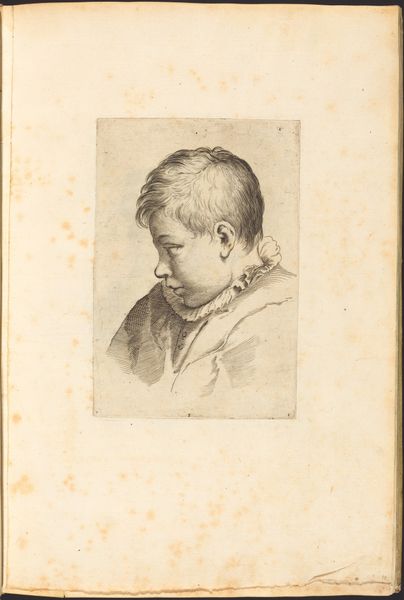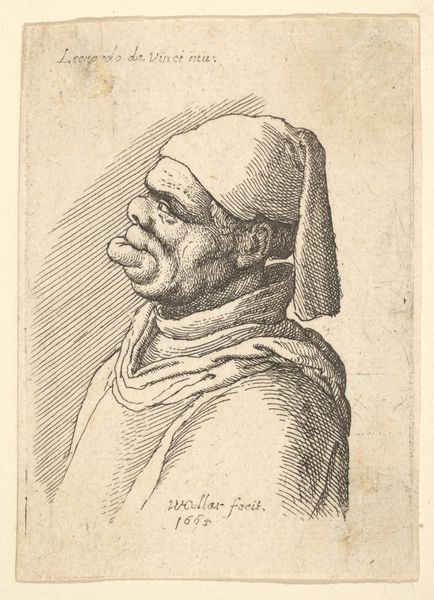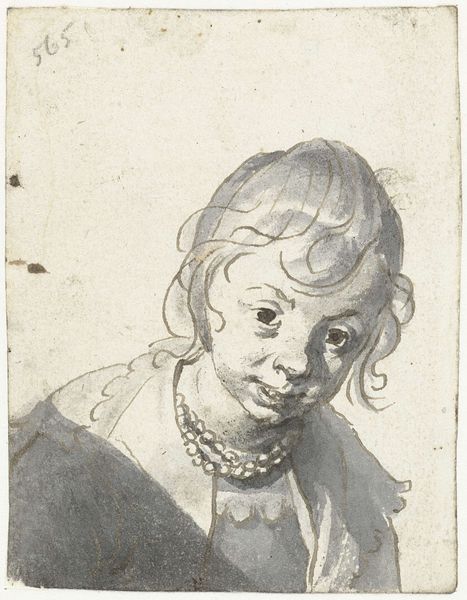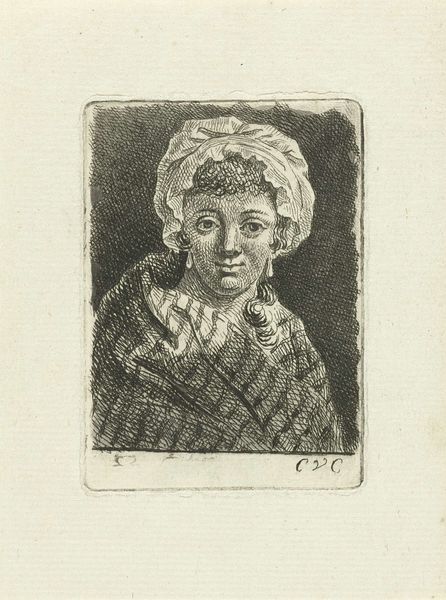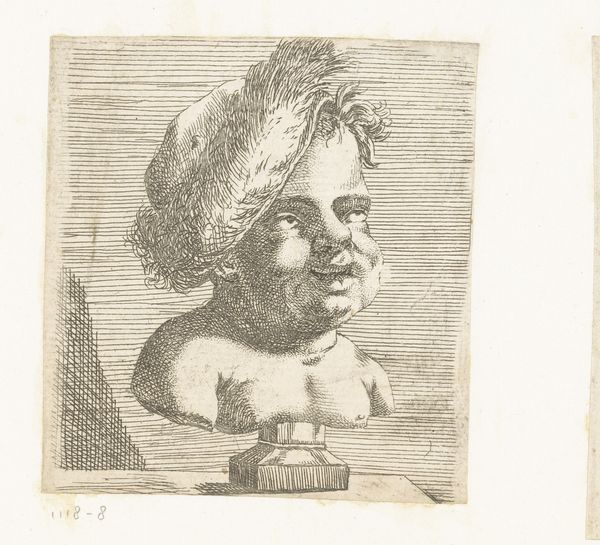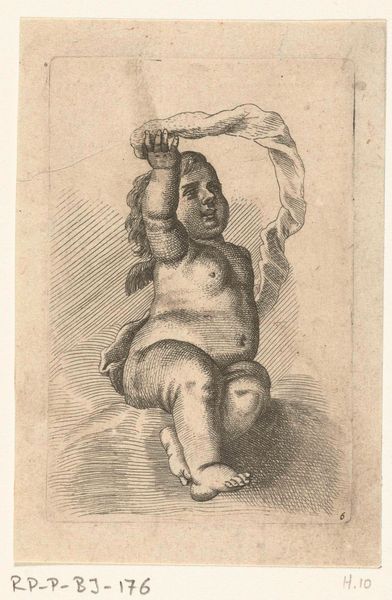
drawing, etching, paper, ink
#
portrait
#
drawing
#
baroque
#
dutch-golden-age
#
etching
#
pencil sketch
#
paper
#
ink
#
pencil drawing
Dimensions: height 73 mm, width 61 mm
Copyright: Rijks Museum: Open Domain
Jan Lievens created this small etching, "Bust of a Black Woman," in the 17th century. Etching is a printmaking technique where a metal plate is coated with a waxy, acid-resistant substance called a ground. The artist then scratches an image into the ground, exposing the metal. When the plate is dipped in acid, the exposed areas are eaten away, creating recessed lines. These lines hold ink, which is then transferred to paper under high pressure. The process allowed Lievens to create fine, detailed lines, capturing the texture of the woman's hair and the subtle nuances of her expression. Look closely at the lines, and you can see the hand of the artist at work. Beyond its technical qualities, this print exists because of the grim history of the Dutch slave trade. While Lievens may have made this artwork as a study of an individual, it’s impossible to ignore the context of exploitation that made encounters like this possible. By considering the materials, making, and the social context, we gain a deeper understanding of this artwork, and challenge the traditional distinctions between fine art and craft.
Comments
No comments
Be the first to comment and join the conversation on the ultimate creative platform.
